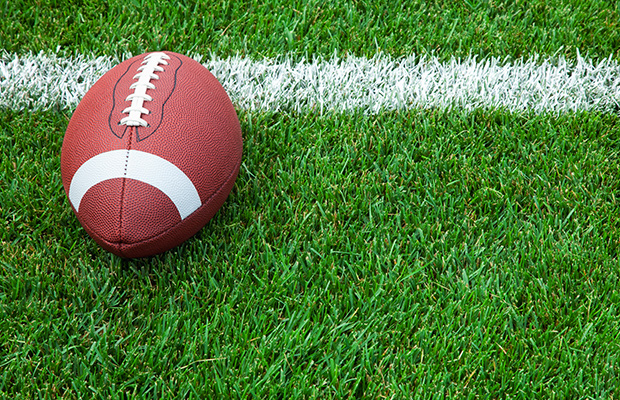
Morganza to the Gulf on Six on Your Side
August 20, 2007Primary care doc shortage epidemic
August 22, 2007B is for Brutal, because football is a hard contact sport. Football players have to endure a level of pain that no athlete in any other team sport has to experience. Curiously, though, most of the pain delivered to these kids does not come from the big, showy tackles. The pain is mostly the result of bruises, sprains and tears. Spectators rarely see what causes these injuries and usually only notice when players are carried off the field.
C is for Close, which only counts in horseshoes and hand grenades – not in football. Nine yards and 34 inches isn’t a first down. “Almost” catching a pass is the same as dropping it. And “losing” by an extra point is still losing.
D is for Double Wing Formation, invented by California high school football coach Don Markum. This offensive scheme is primarily designated for running sequences using misdirection and power plays. Most double wing plays use a motioning wing back at the start of each play.
E is for Extra Point, a “chip shot” that kickers attempt after each touchdown. Sometimes, an extra point can be the difference in a tight playoff game between arch-rival teams. Sometimes it can be blocked, reversing momentum in the direction of the defense.
F is for Fans. Without them, the high school and college football experience wouldn’t be complete. They battle the elements (stifling heat and the occasional thunderstorm) to cheer the local squad to victory, and are the first to offer condolences after each defeat.
G is for Gatorade, the popular sports drink that gets guzzled by players along the sidelines. It’s the perfect thirst quencher for dehydrated athletes, and the perfect sticky concoction to dump on coaches in the waning seconds of district and state title victories.
H is for Halftime, the intermission that splits the game down the middle. It provides an opportunity for players to rest and fans to visit the restroom. It also enables the marching band an opportunity to entertain with a musical selection. During this respite from the game, a coach has a brief window of opportunity to deliver inspirational pep talks that could boost the intensity of their squad for the third and fourth quarters.
I is for I-Formation, invented by former Virginia Military Institute coach Tom Nugent [no known relation to Ted], is one of the most common offensive formations in football. Its name is derived from the vertical alignment of the quarterback, fullback and running back. The I-formation is typically employed in running situations.
J is for Jerseys. Since football is for tough guys, real men do not like to talk about how nice a “uniform” looks. But football jerseys and helmets can provide a showcase for color and design like no other. Whatever opinion LSU fans have of USC, most college players would readily admit that the sight of O.J. Simpson, Charles, White, Marcus Allen or Reggie Bush rampaging toward the defensive line in their flaming garnet-colored jerseys is more than intimidating.
K is for Kickoff, which occurs at the start of each half. It is traditionally decided by a coin toss at the beginning of each game. The visiting captains call heads or tails. If right, he gets to choose whether to receive the ball or defer to the second half. Kickoffs also occur after touchdowns.
L is for Linebacker, a player who has one goal: destroy the quarterback. Linebackers will sometimes drop back into zone coverage to clog passing lanes, but they ultimately yearn to sack the opposing signal caller. If they can get to the quarterback early, he’ll often “hear footsteps” for the remainder of the game, forcing him to hurry his passes and make hasty decisions.
M is for Mud, the combination of rainwater and dirt that invariably finds its way onto football jerseys. Mud causes players to slip and slide across the gridiron. It also makes footballs extra difficult to snag out of the air. Mud even has an earthy aroma that wafts throughout the locker room when players finally come off of a wet field.
N is for Nachos, a concession that compliments all games. There’s something about melted cheese slathered over tortilla chips that makes us think “football.”
O is for Offensive Line, one of the most unheralded and underappreciated positions on the football field. Quarterbacks, running backs and wide receivers reap much of the gridiron glory, but victory can’t be achieved without an adept unit of linemen. An O-line can open holes for running backs and buy extra time for quarterbacks. It can also keep the offense on the field, allowing the defense to rest. In essence, success is greatly contingent upon a successful offensive line.
P is for Playbook, a notebook or binder filled with all the coach’s secret weapons that can defeat the opposing team. The playbook is studied by all members of the team. Before the team hits the field, they have a pretty good idea of what plays will and won’t work. Coaches, however, always like to keep those secret weapons on hand for those sneak plays.
Q is for Quarterback. Without him, there is no football game. On the field, he’s the commander-and-chief, the person everyone looks to for the long Hail Mary passes, the short pitches, tuck-and-runs, or the patented QB sneaks into the end-zone.
R is for Red Zone, the area between the 20-yard line and the goal line at both ends of a field. It’s the place where defenses tighten and offenses gun for the end zone. How well a team performs in the red zone can often dictate the outcome of a game.
S is for “Star Spangled Banner,” the National Anthem for the United States. When this song is performed, the crowd is quiet and at ease. Patriots stand before the American flag saluting all who’ve fought for America’s freedom – the freedom to play sports like football. The lyrics are based on a poem written in 1814 by Francis Scott Key, a 35-year-old lawyer.
T is for the Trenches, the area between the offensive and defensive lines where battles are won and lost. Mere nanoseconds after the ball is snapped, shoulder pads collide as leviathans jockey for position. Players in the skill slots are heralded, but the outcome of games depends on the battles in the trenches.
U is for Underdog. Football is about the drama of overcoming adversity and the underdog symbolizes this in its purest form. As fans, we want to see the state champ toppled by the contender, the favored lose favor and the undersized topple giants. We want to see them kick that 50-yard field goal in the rain and wind, and catch that Hail Mary on the fingertips of one hand.
V is for Victory, the ultimate goal of each football program. With enough victories, teams can secure a spot in the playoffs. With enough playoff victories, teams can secure a spot in the state championship. And with a state victory, teams can secure bragging rights for a lifetime. (Ask Bobby Hebert!)
W is for Wing-T. Heavily promoted locally by current St. James High School head football coach Rick Gaille (gay-lee) decades ago, the Wing-T is the “T” offensive backfield formation, except that one of the halfbacks lines up as a wingback outside and in back of the tight end. The formation can force the defense to alter its alignments when the wingback goes in motion toward the fullback prior to the snap. Also, the formation places the wingback in position to block the defensive end inward when running one of the Wing-T’s bread-and-butter plays, the sweep.
X is for X-Ray, something that injured players receive after breaking bones in their bodies. A positive X-Ray is their passport back into the starting lineup; a negative X-Ray is a one-way ticket to the Injury Reserve list.
Y is for Yard, the standard unit of measurement in football. Teams battle to move the ball 10 yards on four plays to earn a first down. Sometimes teams lose yards when their
quarterback gets sacked. The team that earns
the most yards is usually the team that wins football games.
Z is for Zebras, the nickname given to referees. These individuals have the authority to alter the outcome of a game. With a simple blow of a whistle, they can elicit euphoric cheers or vitriolic jeers from the bleachers.










